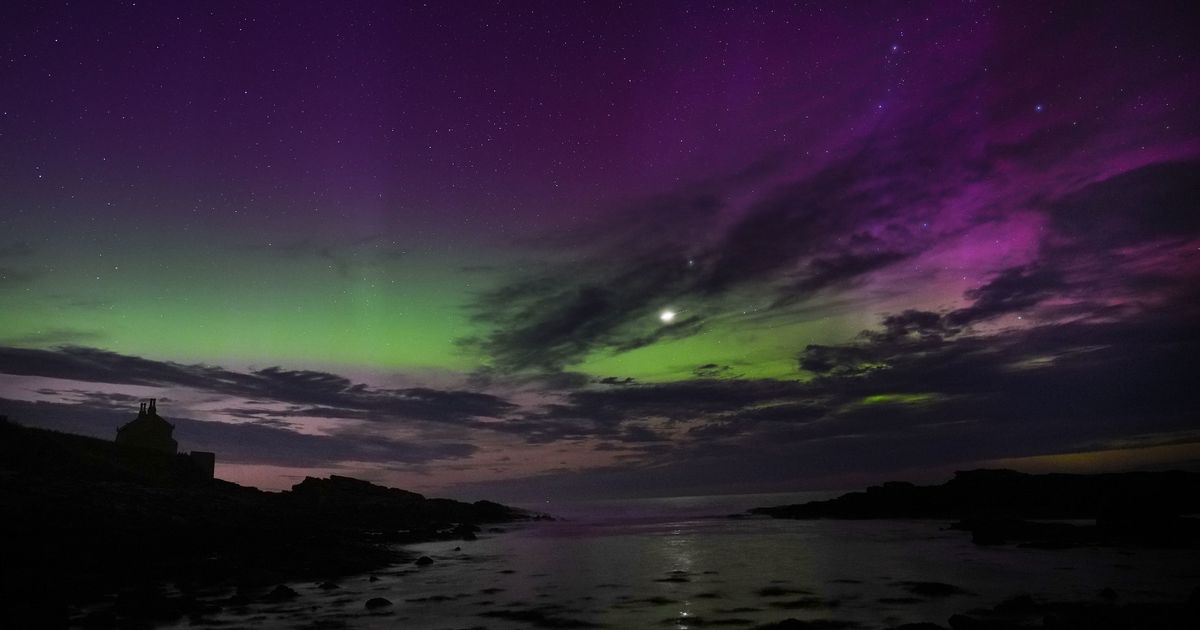The Met Office has said the Northern Lights could dazzle skies across parts of the UK on Friday night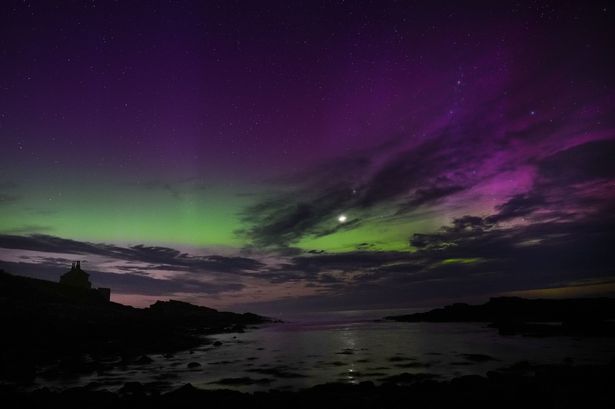 The aurora borealis, also known as the northern lights, could be visible tonight(Image: PA)
The aurora borealis, also known as the northern lights, could be visible tonight(Image: PA)
The Met Office has revealed where in the UK could witness the Northern Lights light up skies tonight in its space weather forecast.
The Northern Lights, also known as the aurora borealis, could reach northern parts of the UK on Friday night (May 9) thanks to fast solar winds.
Auroras are caused by large explosions of activity from the Sun, which throw out huge amounts of charged particles – called solar wind – into space.
When these particles are captured by the Earth’s magnetic field they can collide with gas molecules in the atmosphere in an event called a geomagnetic storm. Light is emitted from these collisions at various wavelengths, forming spectacular colourful displays in the sky.
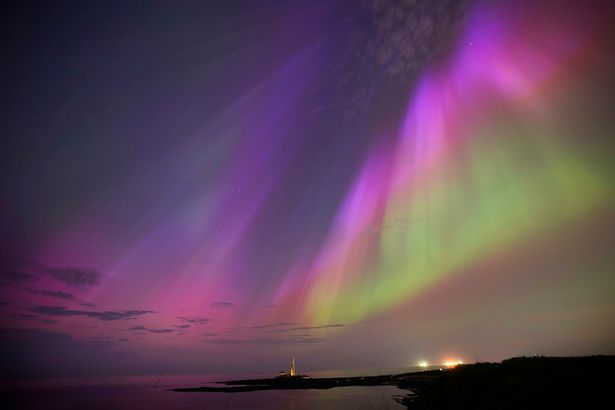 The ‘solar maximum’ has caused the appearance of northern lights over more southern latitudes recently(Image: PA)
The ‘solar maximum’ has caused the appearance of northern lights over more southern latitudes recently(Image: PA)
The Met Office space weather forecast says a coronal mass ejection (CME) – a large eruption from the Sun – along with fast solar winds could bring ‘enhanced aurora’ to the UK.
The weather agency said: “A possible glancing blow from a coronal mass ejection (CME) may arrive on 09 May, combined with fast winds from a coronal hole which could bring a chance of enhanced aurora over northern Scotland on Friday night and into Saturday morning (UTC).”
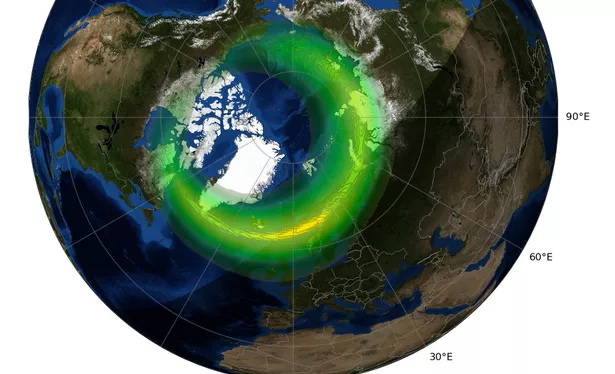 Met Office aurora maps forecast possible Northern Lights from 9pm tonight(Image: The Met Office)
Met Office aurora maps forecast possible Northern Lights from 9pm tonight(Image: The Met Office)
Northern parts of Scotland could spot aurora displays tonight. According to Met Office aurora maps, the best time to spot the Northern Lights is from 9pm tonight (May 9) until around midnight on Saturday, May 10.
The Met Office forecasts clear skies across large parts of the UK tonight, including in northern Scotland.
Cloud cover maps show minimal patchy clouds moving across northern parts of the UK, but clear skies for many.
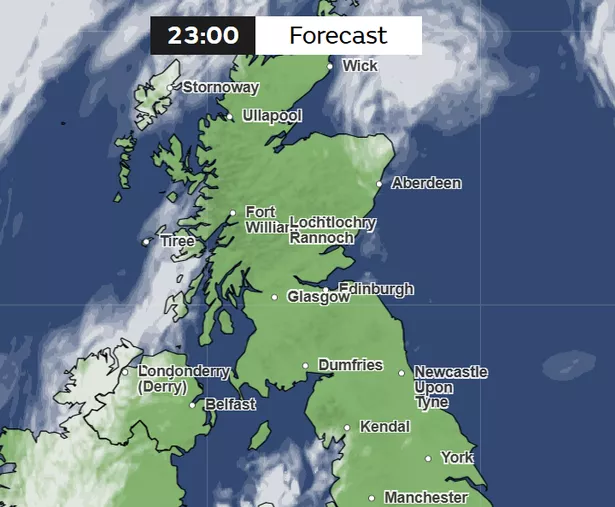 Met Office cloud cover maps show clear skies for many at 11pm on Friday, May 9(Image: The Met Office)
Met Office cloud cover maps show clear skies for many at 11pm on Friday, May 9(Image: The Met Office)
You may have noticed that the UK is seeing more Northern Lights displays at the moment, as many will remember the strong and widespread Northern Lights display that lit up much of the night sky last October.
This is because the Sun is currently in the peak of its 11-year cycle, known as the ‘solar maximum’. Solar activity becomes more rampant during this time, making aurora displays more likely to reach southern latitudes.
After the solar maximum ends in around mid-2025, the Northern Lights will likely be limited to northern latitudes, such as northern parts of Canada, Norway, Sweden, Finland, Alaska.
